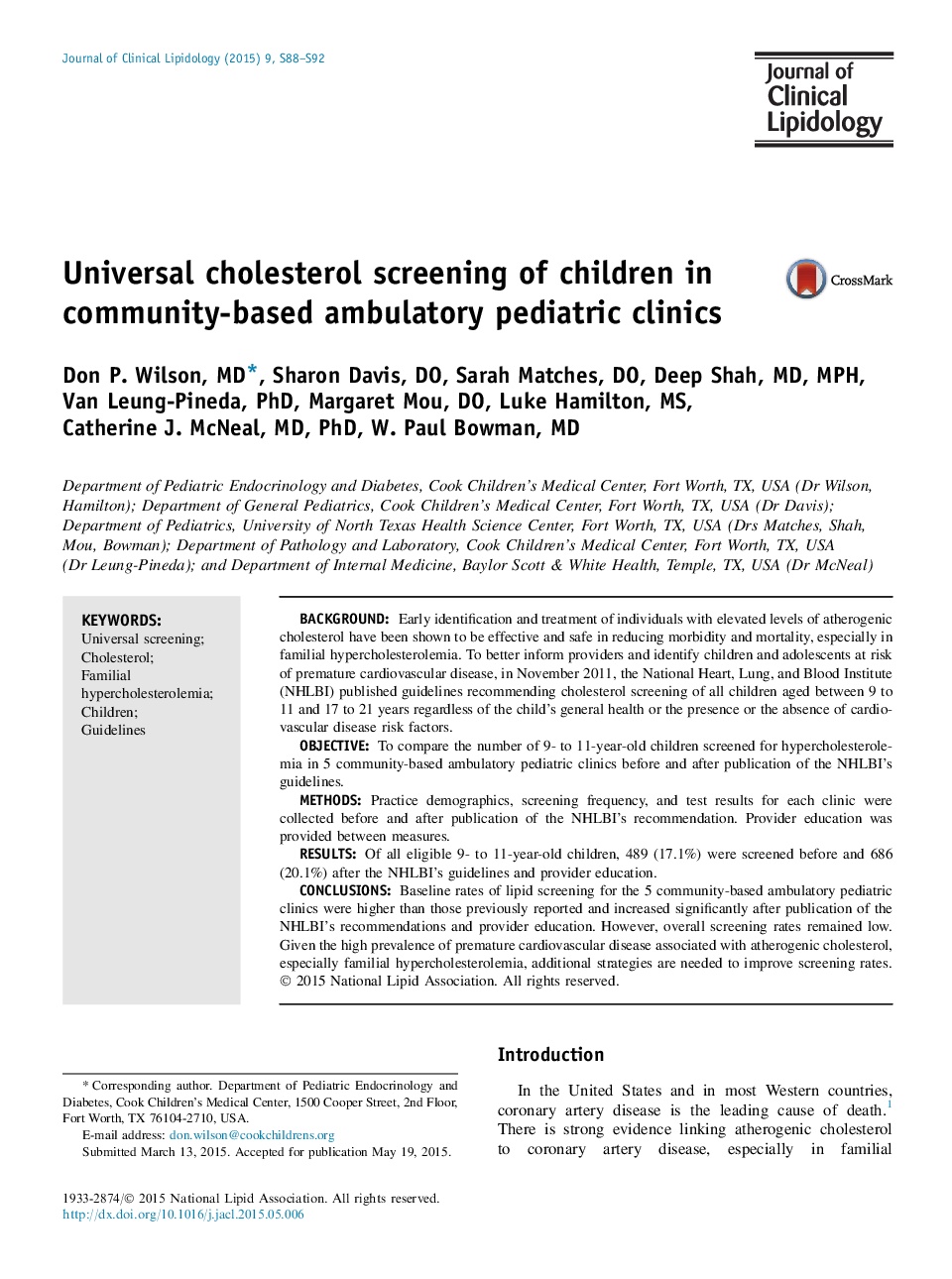| Article ID | Journal | Published Year | Pages | File Type |
|---|---|---|---|---|
| 2965816 | Journal of Clinical Lipidology | 2015 | 5 Pages |
•Youth should be screened between 9 to 11 and 17 to 21 years of age regardless of their general health.•Atherogenic cholesterol is strongly linked to coronary artery disease, especially in FH.•Under screening and inadequate treatment of those with hypercholesterolemia is well known.•Given the high prevalence of CVD, additional strategies are needed to improve screening rates.
BackgroundEarly identification and treatment of individuals with elevated levels of atherogenic cholesterol have been shown to be effective and safe in reducing morbidity and mortality, especially in familial hypercholesterolemia. To better inform providers and identify children and adolescents at risk of premature cardiovascular disease, in November 2011, the National Heart, Lung, and Blood Institute (NHLBI) published guidelines recommending cholesterol screening of all children aged between 9 to 11 and 17 to 21 years regardless of the child's general health or the presence or the absence of cardiovascular disease risk factors.ObjectiveTo compare the number of 9- to 11-year-old children screened for hypercholesterolemia in 5 community-based ambulatory pediatric clinics before and after publication of the NHLBI's guidelines.MethodsPractice demographics, screening frequency, and test results for each clinic were collected before and after publication of the NHLBI's recommendation. Provider education was provided between measures.ResultsOf all eligible 9- to 11-year-old children, 489 (17.1%) were screened before and 686 (20.1%) after the NHLBI's guidelines and provider education.ConclusionsBaseline rates of lipid screening for the 5 community-based ambulatory pediatric clinics were higher than those previously reported and increased significantly after publication of the NHLBI's recommendations and provider education. However, overall screening rates remained low. Given the high prevalence of premature cardiovascular disease associated with atherogenic cholesterol, especially familial hypercholesterolemia, additional strategies are needed to improve screening rates.
